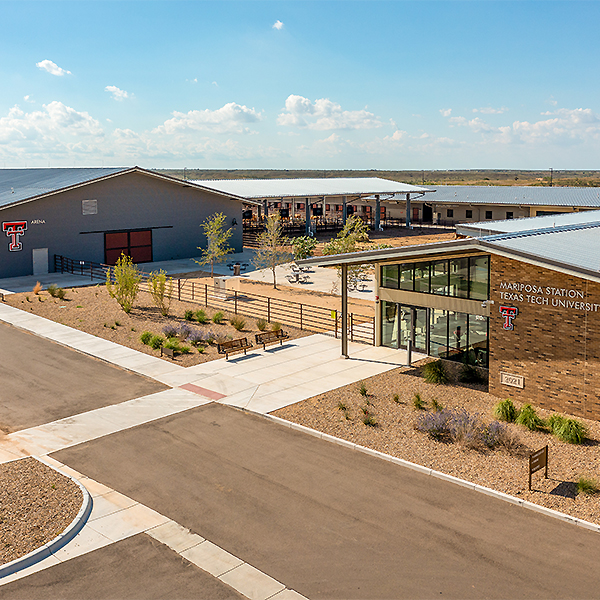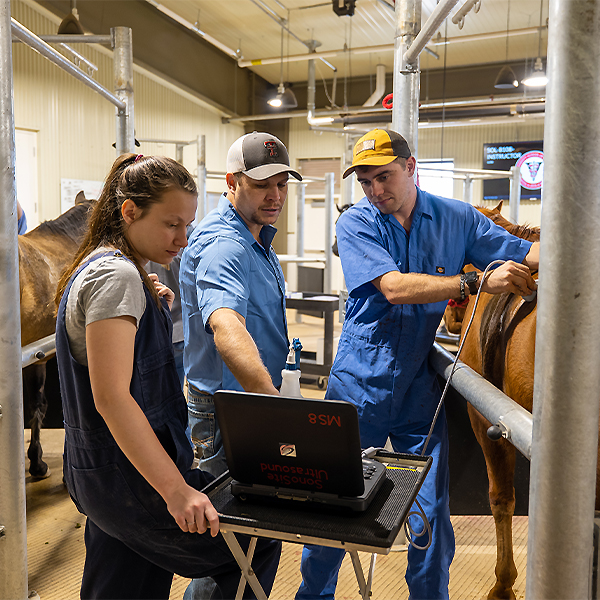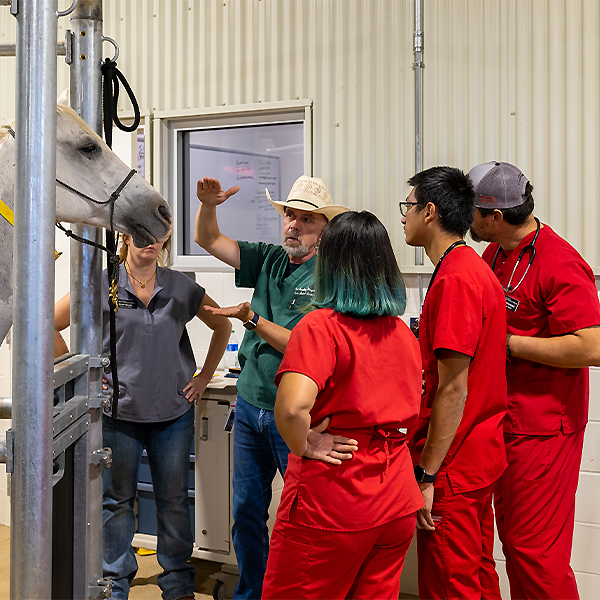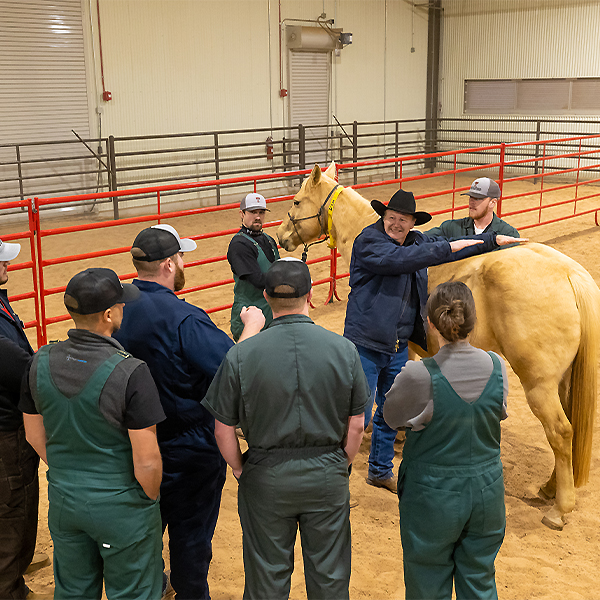
There is no better time than now to become a veterinarian, and stepping up to meet this challenge is Texas Tech's School of Veterinary Medicine.
If there is one phrase that resonates with Texans, it's “Everything is Bigger in Texas” and that's the darn truth. Texas takes pride in being the second largest state in the U.S. by both area and population. The Lone Star State has over 250,000 square miles of land with vast differences in terrain and weather. So, needless to say, Texas is a big area to cover. And more than that, Texas is a state of mind as well as a physical place we call home.
For veterinarians – and wanna be veterinarians, Texas brings good news. For one, there is a growing need for veterinarians. On top of that there is a clear need for large-animal veterinarians. To add to the rich tapestry of Texas' complexity, there are nearly 1 million horses in our state but relatively few equine veterinarians available. We in the Panhandle know just how important horses are to everyday life. They are versatile animals used for work, competitions, transportation, or simply as companions.
There is no better time than now to become a veterinarian.

Stepping up to meet this challenge is Texas Tech University's School of Veterinary Medicine in Amarillo. It is here where we are helping shape the future of veterinary medicine through a singular purpose: to serve rural and regional communities, and provide access to an affordable world-class veterinary education. We heard the demand from veterinarians across Texas and New Mexico and now we are implementing a curriculum designed to provide the knowledge and skills needed for our graduate veterinarians to be successful. Our focus is to produce day-one-ready veterinarians who are confident and competent in all domestic species, including horses.
The excitement of building something new – something from the ground up - is a once-in-a-generation opportunity that everyone at the school cherishes. The growing numbers of faculty and staff have allowed teams to begin to develop within the school. For instance, we have a team of food animal medicine instructors, small animal medicine instructors and, of course, equine medicine instructors. The equine team consists of doctors James Brown, Carolyn Arnold, Luis Morales, Keith Chaffin, John Dascanio and Britt Conklin. Within this group of equine vets there is a wealth of knowledge that is being passed on to our students. They are on their way to becoming some of the best horse veterinarians in the country.
The spring of 2023 has been busy for the equine team. Firstly, we welcomed Dr. Carolyn
Arnold to the team. Dr. Arnold is a world-renowned large animal soft tissue surgeon
with an extensive research portfolio. Dr. Arnold's special interests include soft
tissue surgery and research projects in areas of the gastrointestinal microbiome as
well as joint research. The latest addition to the team is Dr. Keith Chaffin who joined
us in early April. Dr. Chaffin is an international expert in equine internal medicine
who has authored many papers and book chapters, presented at international conferences,
and has treated thousands of horses with complex medical problems. His role at our
school is Professor of Equine Internal Medicine where he will give lectures, teach
skills, and mentor students in the DVM program. He is also an Assistant Dean of Student
Success. Dr. Chaffin will help students navigate the DVM program and provide them
with valuable career advice as they enter their clinical year. 
It is hard to believe our inaugural class just wrapped up its second year. They have acquired valuable equine skills such as performing dentistry, managing colic and respiratory problems, treating wounds and lacerations, identifying and treating lameness, performing ultrasound, and taking radiographs to identify causes of lameness. Their highlight for the spring was castrating 230 donkeys at the Peaceful Valley Donkey Rescue in San Angelo, Texas. By castrating the donkeys, our students meaningfully helped the donkey rescue achieve their important purpose and these donkeys will be rehomed across America. It also helped our students become proficient in their surgical skills given the number of castrations each of them performed. There are not many veterinary schools across the country who can provide access to an opportunity like this. In fact, most veterinary students are lucky to perform a single castration while at school. In addition, our students engaged a future generation of veterinarians when they helped Dove Creek Horse Rescue in Canyon host an event for high school students who are on a quest to become future veterinarians.
Recently our school, led by the equine team, hosted a continuing education event for
veterinarians from across Texas and neighboring states to attend the Texas Equine
Veterinarian Association (TEVA) meeting. This meeting featured lectures and a wet
lab from our faculty on equine topics related to dentistry, sinus issues and conditions
affecting the upper and lower airway.
Our faculty are also engaged in the community through consulting with local and regional veterinarians to help solve complex health problems. One example is a local practice called Mobile Veterinary Practice (MVP) right here in Amarillo. Some of the cases worked on include squamous cell carcinoma (tumor) involving the eye, removing a piece of wood wedged into skin above the hoof, removing a retained cryptorchid testicle from a colt, and extracting ingested wires from a horse's throat. Faculty involvement in these cases provides excellent learning opportunities for our students as well as providing care for the horses in our community. Many of our students are involved in clubs within our school. The Student Chapter of the American Association of Equine Practitioners is one of those clubs and MVP is a great outlet for the clubs to host educational experiences.
We are building a truly incredible program that is changing the face of veterinary medicine and fulfilling a great need in the Panhandle, in Texas, and in surrounding areas. Our equine team is developing our students to become graduates with the necessary skills and knowledge of equine medicine and surgery so that they can best serve their communities across Texas and New Mexico.
It is indeed bigger in Texas. It is also better in Texas. And the best is right here in Amarillo.
